Test report: Aero Color artists airbrush paints
For the last ten years I've been airbrushing my models with Vallejo and Vallejo Model Air paints. During these years I've become more and more irritated with the way the dry on the top of the needle. It's become more and more of a limiting factor, since I've gone in the direction of airbrushing finer and finer patterns by free hand and working with thin, uneven, half transparent layers of paint.
The problem can be partly solved, by mixing retarder into the paint, but I've never managed to solve it completely. Sometimes it has worked. Other times not.
It was time to try something new.
Schmincke Aero Color are waterbased acrylic paints designed for airbrush artists. Their pigment is very fine, they are thinner than the paints from Vallejo, Tamiya or Gunze and they dry considerably slower. Each can is equipped with a pipette, which makes handling the paint easier and less messy.
They can be thinned with water and washed away with alcohol.
Their longer drying time makes them flow better through the airbrush. Even though the do dry a little on the tip of the needle, it's so little that it causes no real problem.
This allows you to work with lower air pressure, the span of pressures that you can work with widens.
Cleaning the airbrush becomes easier too. Often I just blow water through the airbrush. I don't need to take it apart as often.
Since they are thinner and dry slower than most modelling paints, there is a greater risk of making puddles when airbrushing. You need to work carefully with thin layers.
It's easier to paint thin lines, and to draw and write with them.
The fact that they are thinner makes it harder to paint small parts with them. You might easily just blow the paint away from the part. The solution is to decrease the air pressure and to hold the airbrush a little longer away from the part.
They stick quite well to polystyrene. I sprayed a thin layer onto a piece of styrene and let it dry for 24 hours. Then I tried to scratch it with my fingernail. I had to go pretty hard at it, before I could make a visible scratch.
They stick even better to Warhammer/Citadell primers.
When dry they have a half gloss sheen, but it depends a little on how thick layers you spray. The thicker the layer, the glossier the surface. You can usually apply the decals directly on to the paint. It's no problem to use Micro-Set and Micro-Sol on them.
They are not very good for hand painting, if you use them directly from the can. However if you put a drop of paint on a palette and let it dry for a while, they are OK to hand paint with.
One disadvantage is, that they don't come in typical modelling nuances, like RLM 02 or US-Navy Haze Grey. For me, that's no big problem, since I've been mixing my own colours for the last five years.
I went a step further and bought only four basic colours, Blue, Green, Red and Yellow plus Black and White. The idea was, that that would really make me learn my Colour Theory. It was harder than I thought, but I hope it will result in better paintjobs in the future.
The models your see in the pictures, are my latest three models, that are all painted with Aero Colors. I wouldn't have been able to airbrush the camouflage of the Heinkel by free hand with Vallejo paints.
The last picture is what happened, when my friend Stellan Englund, one of my idols when it comes to airbrushing, tried them out on a piece of paper.
Conclusion:
Aero Color paints are an excellent alternative if you like to airbrush by free hand, like to work with thin half transparent layers, and like to mix your own colours.
If you want to quickly spray a covering layer of RLM 02 onto your model, there are other better alternatives available.
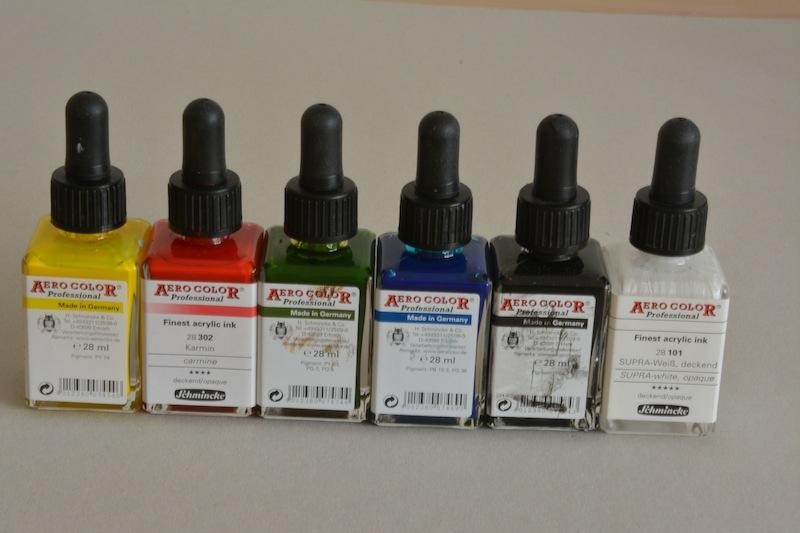
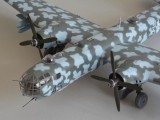
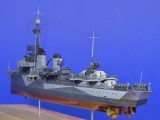
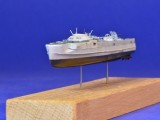
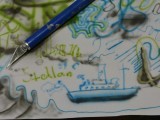
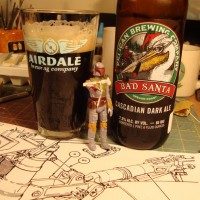

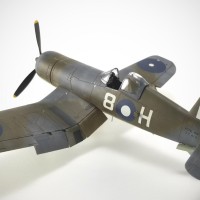
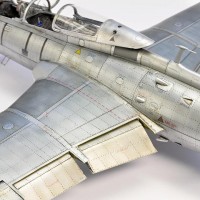
What do you exactly mean with "dry on the top of the needle", Ulf?
What's the consequence of this once the paint particles have reached the surface of the model? Are they already dry at this point, i.e. they don't adhere very well?
I mean that the paint dries into a lump on the tip of the needle, thus blocking the flow of the paint.
This is no major problem if you paint large surfaces, unless the lump gets blown off the needle and lands on the surface you are painting, which rarely happens
However, if you try to paint fine lines, paint a mottle camouflage or something similar, it becomes a major problem. You just don't know what kind of paintflow you have. The flow might stop at any moment or the airbrush might spit. It's damned frustrating.
I see the point. Yes, I have that too with one of the few Vallejo paints that I use (see http://imodeler.com/groups/general-modeling/forum/topic/semi-gloss-clear-satin-varnish/), but I never had it with Gunze or Tamiya. It's really a pity as many other features of these paints are very good.
When I tried to get behind this problem I thought that there might be some flakes of not sufficiently diluted paint coming into the airbrush from the jar and clogging it there. But your theory sounds more realistic.
Tamiya paints sometimes show behavior that at some places has been named "dusting", meaning that the paint is already dry to some extent when hitting the model. This appears with flat paints and especially - for some esoteric reason - when mixing them. There's nothing you can really do against it by any means that I have tried (airbrush pressure, diluting, ...) and so I ended up with using Gunze.
Constant issue with airbrushing acrylic paints - drying at the tip where the air flow meets the paint, so may well investigate this new product.
Thanks, Ulf.
i find when i keep the nozzle aimed up while painting or sitting it helps but you don't want paint to roll back to the trigger...it's not just the paint enamel does it too...gravity feed airbrushes leak a little...keep a napkin in the hand not holding the airbrush and use it to wipe the tip...and start out on some cardboard and drift over to your project for splatter...maybe a tad more air pressure and a drop of diluted dish soap, stirred not shaken